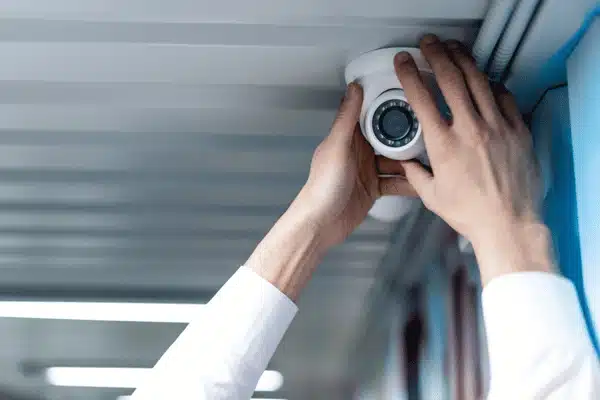Security cameras protect your home and family. But choosing between indoor vs outdoor security cameras can feel confusing. Both indoor and outdoor cameras serve different purposes. Each type works best in its own space.
This guide breaks down the differences between indoor and outdoor camera models. You’ll learn which security camera fits your security needs. We’ll help you pick the right camera for your home.
Weather Resistance Makes the Difference
Outdoor security cameras face rain, snow, and sun every day, so these security cameras are specifically designed for outdoor environments and harsh weather conditions. Most outdoor security cameras carry high IP ratings that stop water and dust from reaching delicate circuits, allowing outdoor home security cameras mounted outside to keep recording potential intruders.
Indoor security cameras, by contrast, live in controlled spaces. These indoor settings do not need heavy weather shields. Lighter plastic housings and compact bodies let home security cameras blend with décor, indoor use, and save settings. Homeowners also choose indoor home security cameras for entryways.
Outdoor models rely on cases with enhanced durability that handle extreme temperatures from –20 °F to 140 °F, while indoor security cameras work best between 32 °F and 104 °F.
The weather-proofing and sturdier materials increase the cost of outdoor units, but that investment keeps outdoor security cameras operating during storms or heat waves. Indoor units last longer since they avoid harsh swings.
Coverage and Field of View
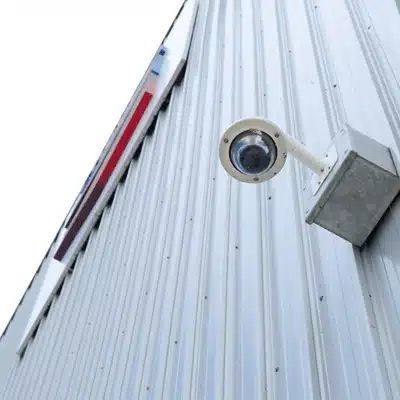
Indoor vs outdoor security cameras come with key differences that influence placement and performance. Outdoor security cameras guard large outdoor areas such as yards and driveways, offering wide 120°–180° viewing angles so outdoor home security cameras cover more ground with fewer units. Built from more durable materials, these outdoor security cameras withstand harsh weather conditions and even extreme weather, making them ideal for outdoor use.
Indoor security cameras, specifically designed for controlled environments, typically view 90°–120° and suit living rooms or halls where redundant indoors coverage is unnecessary. The main differences between indoor and outdoor gear include casing strength and lens width: bullet styles excel outside, while dome cameras adapt to both zones.
For best results with home security cameras, mount outdoor home security cameras high to deter tampering, and place indoor units to watch main rooms without invading privacy. Positioning that respects these key differences deliver clear footage and reliable protection.
Night Vision Capabilities
Night vision helps see in the dark. Outdoor cameras need strong night vision capabilities for complete darkness. Most use infrared lights to see up to 100 feet away.
Indoor cameras handle low light conditions in rooms. They usually see 20-30 feet in the dark. This works fine for most indoor environments.
New outdoor cameras offer color night vision. They use special sensors or built-in lights. This gives better detail than black and white images.
Outdoor surveillance often needs motion detection lights. These turn on when someone approaches. The lights help capture clear footage and scare intruders.
Smart Features and Detection
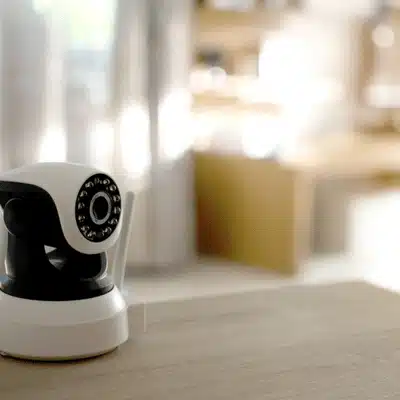
Modern indoor and outdoor security cameras now feature advanced motion detection. Outdoor camera types rely on smarter algorithms to avoid false alarms; they ignore swaying trees, small animals, and shifting shadows across outdoor spaces. Many allow you to view outdoor cameras remotely in live HD with night vision for low light patrols.
Indoor cameras guard smaller spaces, where basic motion sensing and customizable zones reduce false triggers. Because the environment is controlled, standard night vision easily covers hallways and bedrooms.
Two-way audio remains popular for indoor and outdoor security, letting you speak with family members or greet visitors through the lens. For extra indoor and outdoor security, some outdoor home units add sirens or spoken warnings when advanced motion detection spots a person.
Whether you need to check on kids, supervise pets, or deter intruders, matching camera types to each location ensures reliable monitoring without constant alerts.
Installation and Power Options
Indoor cameras are easy to install. Most plug into wall outlets. WiFi coverage is usually strong inside homes. Many indoor cameras are plug-and-play ready.
Outdoor cameras need more planning. You must mount them high and secure. Running power cables outside takes more work. Consider wireless outdoor cameras for easier setup.
Flexible installation options help outdoor placement. Battery-powered models work anywhere. Solar panels can recharge batteries in sunny spots. This lets you place them far from power outlets.
Weather-proof power connections are vital for outdoor use. Use proper cable covers and sealed outlets. Poor connections fail in harsh weather.
Cost and Design Differences
Outdoor cameras tend to cost more than indoor models. The tough build and weather conditions protection add expense. Indoor cameras are usually cheaper and easier to replace.
Indoor cameras blend with home decor. They come in small, stylish designs. Outdoor cameras are often larger and more visible. The visible presence helps deter crime.
Both camera types offer good value. Indoor cameras protect valuables and monitor daily life. Outdoor cameras catch intruders before they enter.
Building a Complete Security System
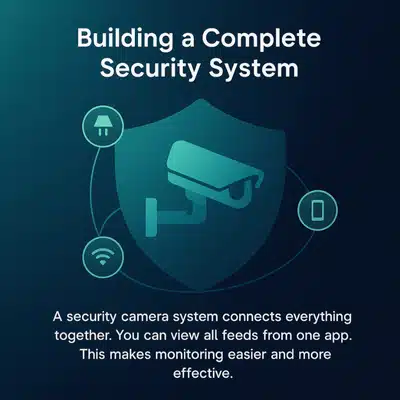
The best approach uses both indoor and outdoor security. Multiple cameras create comprehensive coverage with no blind spots. Outdoor cameras watch entry points and outdoor areas. Indoor cameras monitor inside activity.
A security camera system connects everything together. You can view all feeds from one app. This makes monitoring easier and more effective.
Smart home systems like Control4 can connect cameras with other devices. Lights, locks, and alarms work together. When cameras detect motion, lights turn on automatically.
Privacy and Legal Considerations
Indoor monitoring requires careful thought about privacy. Avoid placing cameras in bedrooms or bathrooms. Many families only turn on indoor cameras when away from home.
Outdoor surveillance is generally more accepted. People expect less privacy in yards and driveways. Still, aim cameras at your property, not neighbors’ windows.
Check local laws about camera placement. Some areas have rules about recording in public spaces. Good camera practices build trust with neighbors.
Choosing What You Need
Your security needs determine which cameras to buy. Start by identifying problem areas. Do you need to watch the front door? A security solution might include outdoor cameras at all entry points, indoor cameras in main living areas, dome cameras for wide room coverage, and bullet cameras for long-distance viewing.
Consider your budget and technical skills. DIY cameras save money but take time to set up. Professional installation ensures everything works correctly.
Weather and Environmental Factors
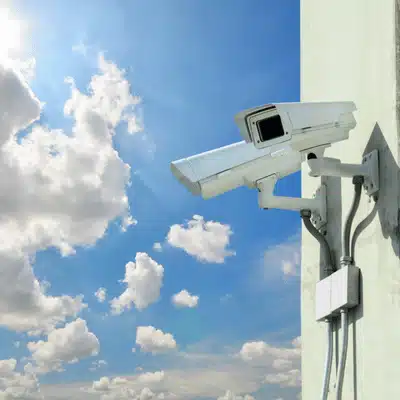
Outdoor conditions vary widely by location. Cameras near the ocean face salt air. Desert areas have extreme heat and dust. Northern climates bring ice and snow.
Choose outdoor cameras rated for your climate. Look for ingress protection ratings of IP65 or higher. This protects against water and dust damage.
Indoor environments are more stable. But consider factors like humidity in bathrooms or heat near fireplaces. Place cameras where they stay cool and dry.
Technology Keeps Improving
2025 brings new features. Better low light performance helps cameras see more detail. Artificial intelligence reduces false alarms. Cloud storage makes footage easy to access.
Wireless outdoor cameras are getting more reliable. Better batteries last months between charges. Improved WiFi helps maintain connections over longer distances.
Color night vision is becoming standard. This helps identify people and vehicles in the dark. Motion-activated spotlights provide footage without blinding lights.
Take Action for Better Security
Don’t wait to protect your home and family. Start with one or two cameras in key spots. Add more cameras over time as your budget allows.
Ready to upgrade your home security? Contact a local security professional today. They can design a comprehensive security solution that fits your needs and budget. Your safety is worth the investment.
Modern security cameras give you peace of mind. Whether you choose indoor cameras, outdoor cameras, or both, you’re taking an important step. Protect what matters most with the right camera system for your home.

